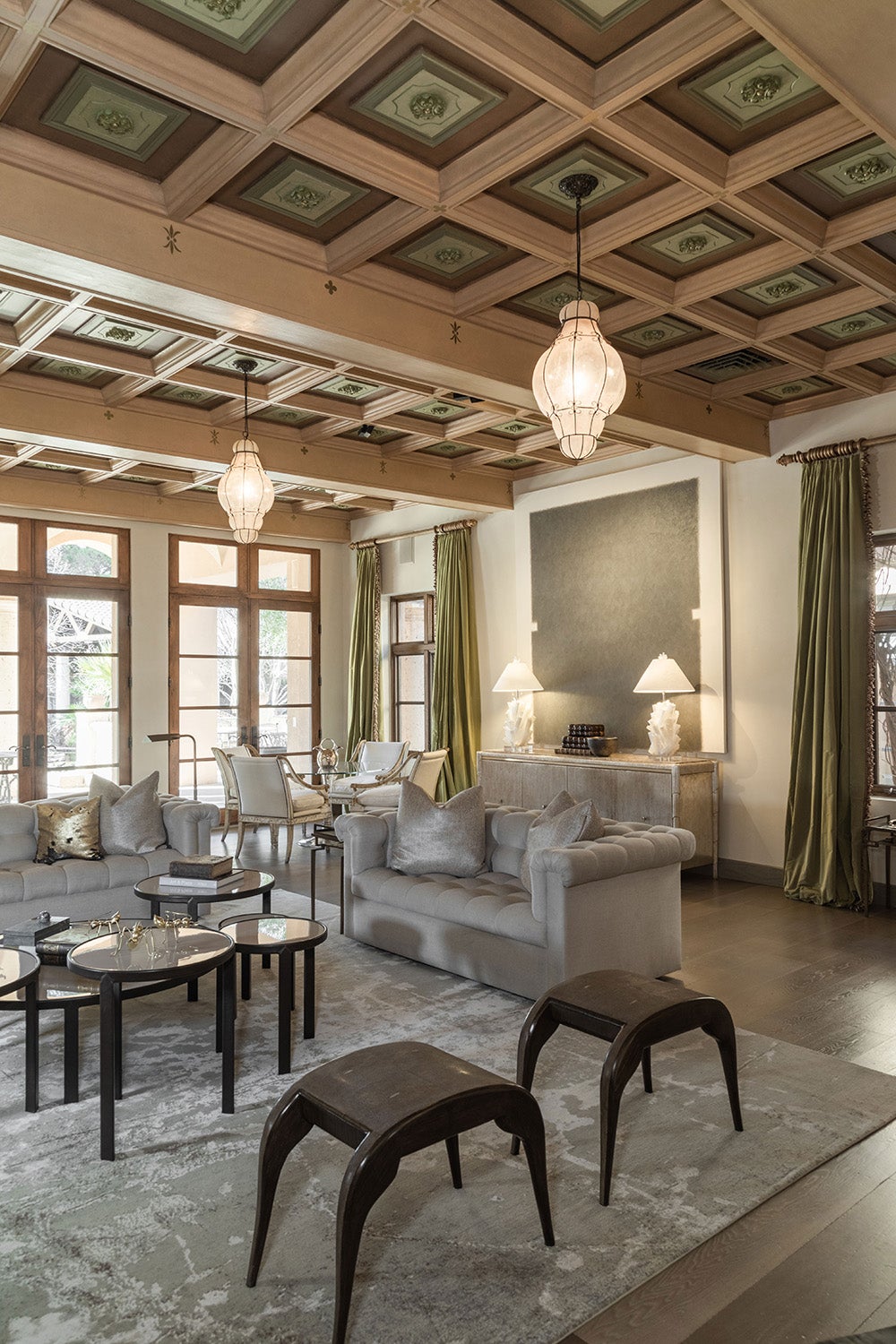Clients come to you for your expertise, and sometimes you have to wield that knowledge to dissuade them from making poor design decisions. We asked 11 designers—Juan Carretero, Elizabeth Cooper, Brenda Danso, Michelle Gerson, Thomas Hamel, Janie Jones, Joshua Jones, Jill Litner Kaplan, Ellen Kastelberg, Jennifer McGee and Elizabeth Miles—what design choices they find themselves talking clients out of most frequently.

Sectioned off
“Normally, I am not a fan of sectionals. I find them clunky, stale and boring. But clients, mostly the guys, are totally seduced by them. Of course, there are times in which they are inevitable for a TV room, but in general, I try to avoid them at all costs. We much prefer to play with different-sized sofas, armchairs, ottomans, etc., to create the perfect intimate seating arrangement. Finding that balance between the positive and negative space between pieces is what makes a room special. Try [doing] that with a nine-seat, (but oh-so-comfy) shiny leather monstrosity—talk about the elephant in the room!” —Juan Carretero, Capital C Interiors, New York

Papered over
“I find myself talking clients out of wallpapering full baths where there will be consistent moisture in the space. Clients will want to wallpaper either above tile in the shower or around the vanities in their full baths, and realistically, that is not the best idea. Unless it is high-quality vinyl, the paper will inevitably start to peel in a couple of years, and they will be calling me back with regret.” —Ellen Kastelberg, Ellen Kastelberg Interiors, Richmond, Virginia

Bad fad
“One thing I frequently talk my clients out of is buying things to copy a certain look or follow a fad. I tell clients that their house should be a reflection of them, not someone else. If they love something they see when traveling, they should buy it. The mix of old and new, high and low, designer pieces, and favorite personal finds from exotic travels—these are the things that give a house personality and soul. Trends come and go, but timeless design is always in fashion.” —Thomas Hamel, Thomas Hamel & Associates, Sydney

Cosmetic Procedure
“We have had many experiences in which our clients express a keen desire to do a kitchen redesign, but one that doesn’t require a full renovation. They look at their existing kitchens and think that we can significantly upgrade the quality and experience by doing a purely cosmetic overhaul. When I hear this question, I immediately ask myself if I am going to do the makeover, or spend the time educating and urging my clients to do a renovation that will require
patience, time, effort, and most of all, money. While these conversations can be difficult, identifying all of the pros and cons of either decision is well worth the effort. Those clients who have placed their trust in us and followed our advice have thankfully been very appreciative and happy with their new-and-improved kitchens.” —Jill Litner Kaplan, Jill Litner Kaplan Interiors, Boston

Let it go
“We love mixing old and new, and especially love using beautiful fine antiques, family heirlooms and pieces that have sentimental value to our clients. That said, we urge clients to really think about whether an item makes them happy, especially if we don’t think it really has a place in their personal style story. We like to take a page from Marie Kondo and ask the client if something really sparks joy, because we don’t want to design a room based around a piece that doesn’t. And we don’t want to incorporate pieces just because a client already has them and feels they need to use them. It costs more in design hours trying to work in a piece that doesn’t fit their style than just finding a new piece and letting that other one go.” —Janie Jones and Elizabeth Miles, Hundley Hilton Interiors, Birmingham, Alabama
Faux pas

“We most frequently find ourselves talking clients out of faux marble. Clients are always afraid to use real marble because they [worry] it [may] stain or not be durable. However, faux marble just can’t compete with the look of real marble.” —Michelle Gerson, Michelle Gerson Interiors, New York

Matchmaking
“I often have to talk clients out of buying matching furniture sets. Recently, I had a consultation with a lovely client, and as we sat down to look at some inspiration, she showed me a clipping from a furniture store ad. I kindly thanked her for looking at items that she found interesting as this was helpful in learning more about her style, but added that while buying matching furniture sets is a simple way to style her home, this would not offer much opportunity to showcase her personality and style. I noticed the idea of mixing furniture seemed foreign to her. Nonetheless, she was open to hearing more about how I could create a cohesive space by mixing rather than matching. As a designer, I strongly feel there’s great benefit in being transparent with clients—after all, they don’t know what they don’t know. It’s my job to provide them with options so they can be well-informed.” —Brenda Danso, BD Interior Design, Toronto
The right fit

“What I need to explain most frequently is scale and proportion. It is a delicate, all-too-frequent conversation with clients who have fallen in love with a diminutive table to place in a large living room or have their hearts set on a supersize swivel chair in a tiny family room. Scale is easier to define, as it is literally the size of something in relation to something else. Proportion, on the other hand, is harder to explain, as it is a relative concept. It truly takes the eye of a designer to understand the relationship between several objects in a three-dimensional space and to land on the perfect proportion. With all types of architectural styles, scale and proportion have to be correct in order to create a comfortable yet elegant, relaxed and livable space.” —Jennifer McGee, Jennifer McGee Design Inc., New York

Buyer’s remorse
“Working in e-design, I often have to talk clients out of making premature furniture purchases prior to the completion of our project. They see a piece and get excited, or it might be on sale, and without consulting with us they buy it. For example, I was working with an e-design client who had just purchased a huge, monster leather sofa and loveseat but told me they wanted to have a ‘California casual’ look for their living room. The particular pieces they bought were nowhere close to the style and feel that they were aiming for. They couldn’t return the pieces so I had to design around them. In my final design, I gave them a recommendation for a sofa that was appropriate for what I knew they really needed. The client realized how much better the alternative was and the mistake they had made. That’s why I don’t encourage people to purchase any big pieces just before they work with an interior designer.” —Joshua Jones, JJones Design Co., San Francisco
Trend alert

“Most often I talk clients out of—or try to talk them out of—trends that I sense both are becoming ubiquitous and will date relatively quickly, particularly when it comes to costly interior construction projects like kitchen and bathroom designs. [Clients are also often interested in] replicating the unique design decisions of friends and neighbors. I always nix this and focus on forging our own unique design path together.” —Elizabeth Cooper, Elizabeth Cooper Interior Design, San Francisco
Homepage photo: A project by Capital C Interiors; courtesy of Captial C Interiors





























